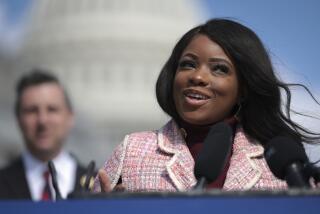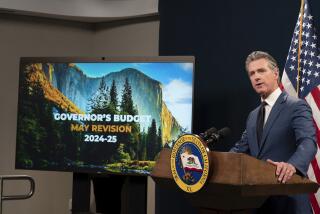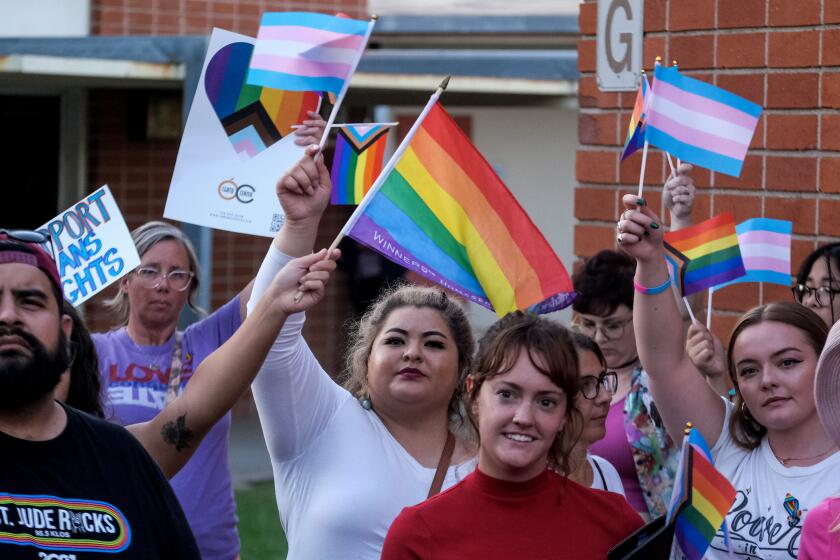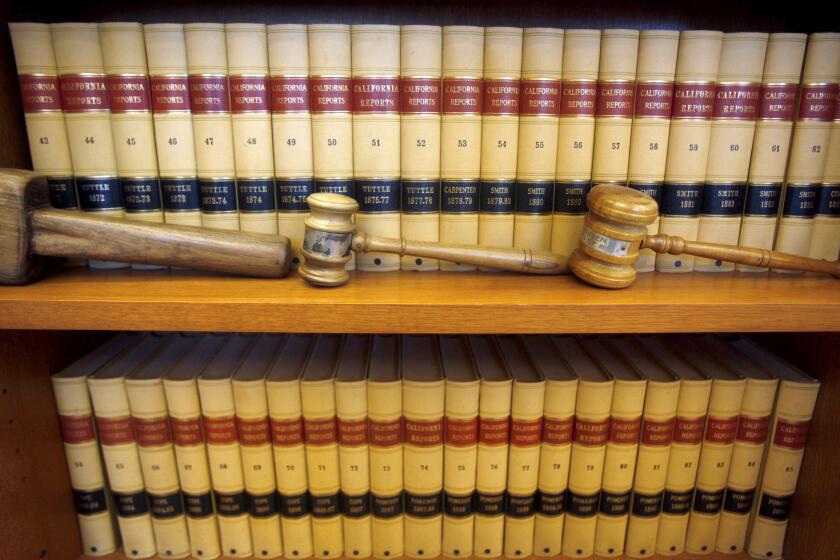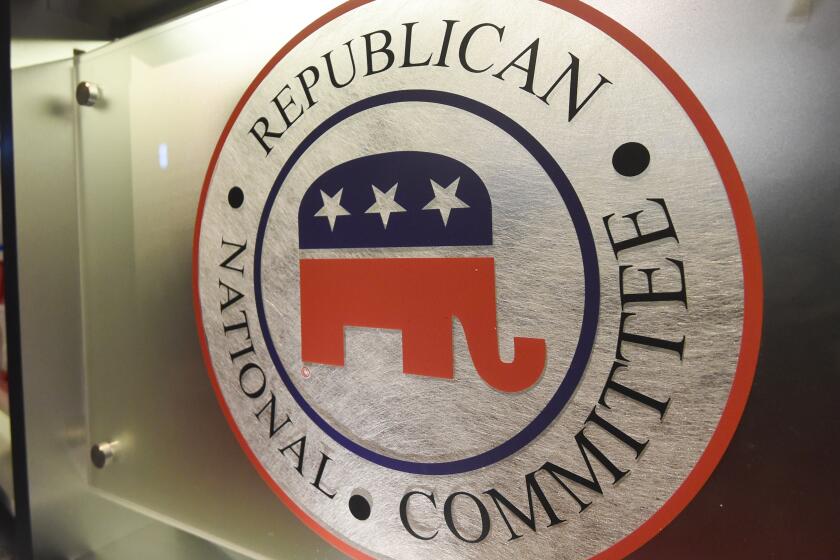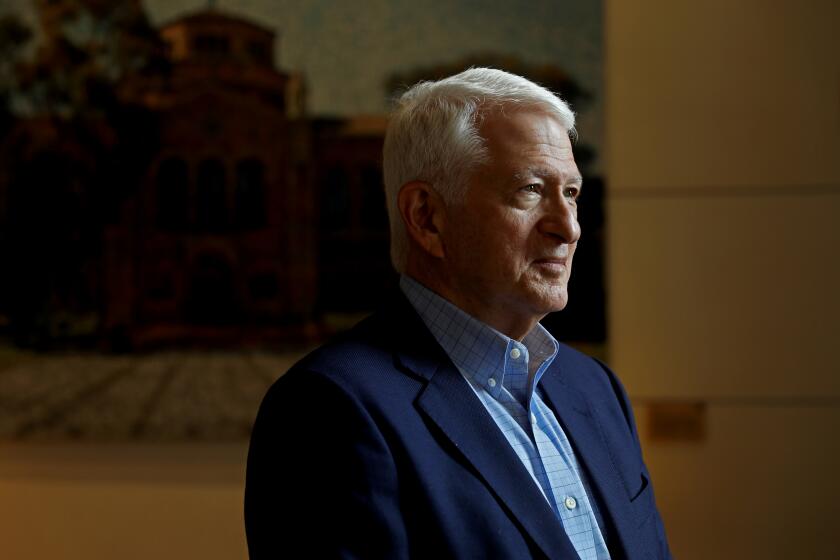Dark Horse Ginsburg Benefited From Confusion at Starting Gate : Judiciary: She was saddled early by attacks from an unlikely source--women’s groups. In a stumbling process, though, she pulled ahead.
The moot court competition had been a fascinating case--the sort of complicated legal conundrum on which Judge Ruth Bader Ginsburg thrives, involving questions on the cutting edge of the issue of sexual harassment.
But at a dinner with an old friend that night last month at Stanford University, the judge’s mind was not on the fictional court over which she had just presided. It was on a very real, and increasingly nasty, court battle in which she herself was at the center--a battle, she confided to her friend, that she feared she was losing.
For weeks, Ginsburg’s name had figured prominently among the candidates President Clinton was considering for the Supreme Court. Her name was among the list of some 50 possible nominees presented to Clinton at a meeting in the Oval Office on March 20--the day after Justice Byron R. White announced his resignation. And over the following weeks, private lawyers working for the White House had prepared a lengthy dossier for the President on her writings and legal career.
But at the same time, a campaign against her--led by people she had thought would be allies--gained so much strength that it seemed to be eliminating her from consideration, according to White House officials.
Indeed, if Clinton had made his choice in early May--as many on his staff originally had hoped he would--Ginsburg almost certainly would not now be the nominee to fill White’s seat and become the 107th associate justice of the Supreme Court, White House aides say.
It is only because the President’s schedule for deciding on a Supreme Court nominee was thrown off track by the outbreak of problems with his budget, by the controversy over his nomination and withdrawal of C. Lani Guinier as assistant attorney general, and by an urgent need to reorganize the White House, that Ginsburg’s supporters had time to regroup and stage a successful counterattack.
“In the end, she was like the horse who was lagging behind and then surged to first,” said one White House official. “Not many people were placing bets on her.”
Ironically, the opposition to her nomination came from a quarter she had counted on as a source of strength and support--the women’s movement. And the attacks filled the judge and her supporters with anger and anguish.
As a lawyer and law professor in the 1960s and 1970s, Ginsburg had pioneered sex discrimination law, arguing six cases before the Supreme Court, winning five, establishing the landmarks in the field. But this spring, younger feminists and liberal activists had turned against her, lobbying the White House to drop consideration of her on the grounds that her views were too narrow, too old-fashioned.
Among other things, they pointed to a speech last March in which Ginsburg criticized what she described as the unnecessarily sweeping nature of the Supreme Court’s 1973 abortion ruling, Roe vs. Wade. Ginsburg suggested that a more gradual approach to abortion rights might have dampened political controversy and strengthened the high court’s legitimacy in the public’s eye. But any criticism of the landmark ruling made her suspect to some in the women’s movement.
“She was so hurt because she felt like the women’s groups were turning against her,” recalls Ginsburg’s friend, Stanford Law School professor Barbara Babcock, who dined with her that night. “She had been hurt by people who should have been her friends.”
Rallied in large part by Ginsburg’s husband, Martin, a prominent tax lawyer and Georgetown University law professor, the judge’s friends began deluging the White House with letters and telephone calls urging a second look.
Sen. Daniel Patrick Moynihan (D-N.Y.) called Clinton and forwarded a letter from Columbia University President Michael Sovern, who compared Ginsburg’s role in ending sex discrimination to Thurgood Marshall’s role on racial issues a generation earlier, an analogy the President repeated in nominating her Monday.
Clinton also heard from conservatives, including Sen. Orrin G. Hatch (R-Utah), who recommended Ginsburg as the sort of moderate the Senate could easily support.
Last Tuesday, as Clinton’s list narrowed, White House aides began an intensive process to check Ginsburg’s finances, her background and her writings.
Friday, Clinton met with Judge Stephen G. Breyer of the U.S. 1st Circuit Court of Appeals in Boston. The two got along well in their 90-minute talk, but at a midnight meeting--a session delayed for hours by meetings on the military action in Somalia--Clinton told his aides he was not yet ready to make a decision. He wanted another choice to examine, Clinton said, telling aides to set up a meeting with Ginsburg as soon as possible.
Officials reached the judge, who was in Vermont for a wedding, and arranged for her to meet the President Sunday morning. There, according to aides, Ginsburg made the sale, leaving the President deeply impressed by her intelligence and her life story. That evening, Clinton summoned his aides once more. “I’m going to go with Ginsburg,” he said.
The early betting had been on Gov. Mario M. Cuomo of New York. The President, a White House official said, began the process with the idea of finding a nominee who was not a sitting judge.
But Cuomo publicly took himself out of consideration for reasons that remain a puzzlement even to White House officials. Richard W. Riley, the former governor of South Carolina and now secretary of education, also told Clinton he did not want the job, preferring to remain where he is.
Then Clinton asked aides to look more carefully at another member of his Cabinet, Bruce Babbitt, the secretary of the Interior. But when word of the Babbitt nomination leaked out, an uproar ensued.
Environmental activists pleaded with Clinton to keep Babbitt at the Interior Department. And at a congressional picnic last Tuesday night, dozens of members of Congress gave Clinton the same message--taking Babbitt out of the Interior Department would be a serious mistake.
Clinton’s original list had also included several Democratic senators. But as his poll ratings faded, officials quickly concluded that the White House could not afford to lose another Democratic Senate seat.
That left a series of judges.
Clinton had considered several. Jon O. Newman, a federal appeals court judge in Hartford, had a brief ascendancy but faded because of stiff opposition in the Senate. Newman had written an opinion page article against the nomination of Clarence Thomas to the Supreme Court, which Republican senators argued was an improper action for a sitting judge. Gilbert S. Merritt of the U.S. 6th Circuit Court of Appeals in Nashville briefly rose as well but faded quickly.
By last week, officials said Monday, Clinton’s list was down to three: Babbitt, Breyer and Ginsburg. As Clinton began to have second thoughts about Babbitt, he instructed aides to travel to Boston to interview Breyer, who was in a hospital recuperating from a bicycle accident. On Friday, the judge took a train to Washington and lunched with the President.
But while the President liked Breyer, he was not ready to decide. Aides insisted Breyer’s failure to pay social security taxes for an elderly housekeeper was only a minor factor in the decision. Instead, they described a response typical of Clinton’s decision-making style: He did not want to choose Breyer without having an alternate candidate to compare him with. And with Babbitt’s nomination seeming less and less feasible, he did not really have an alternative.
Profile: Ruth Bader Ginsburg
* Age: 60
* Birthplace: Brooklyn, N.Y.
* Education: Bachelor’s degree, Cornell University, 1954; attended Harvard Law School, 1956-58; graduated from Columbia Law School, 1959.
* Career: Became an assistant professor at Rutgers University School of Law in 1963, rising to full professor six years later. In 1972, she went back to Columbia, this time as the law school’s first woman professor. She is a founder of the Women’s Rights Project of the American Civil Liberties Union. Appointed to the federal appeals court in Washington by President Jimmy Carter in 1980.
* Religion: Jewish
* Personal: Married to Martin David Ginsburg, two children.
Source: Times staff and wire reports
More to Read
Get the L.A. Times Politics newsletter
Deeply reported insights into legislation, politics and policy from Sacramento, Washington and beyond. In your inbox three times per week.
You may occasionally receive promotional content from the Los Angeles Times.
